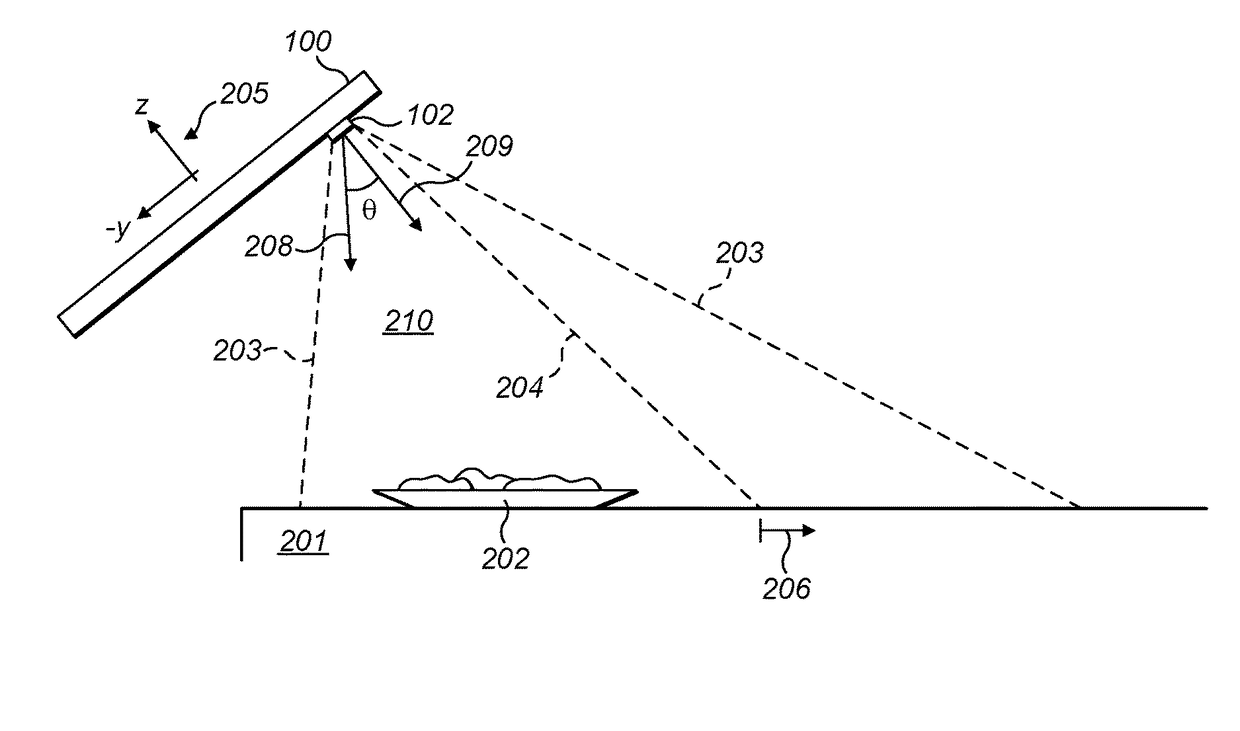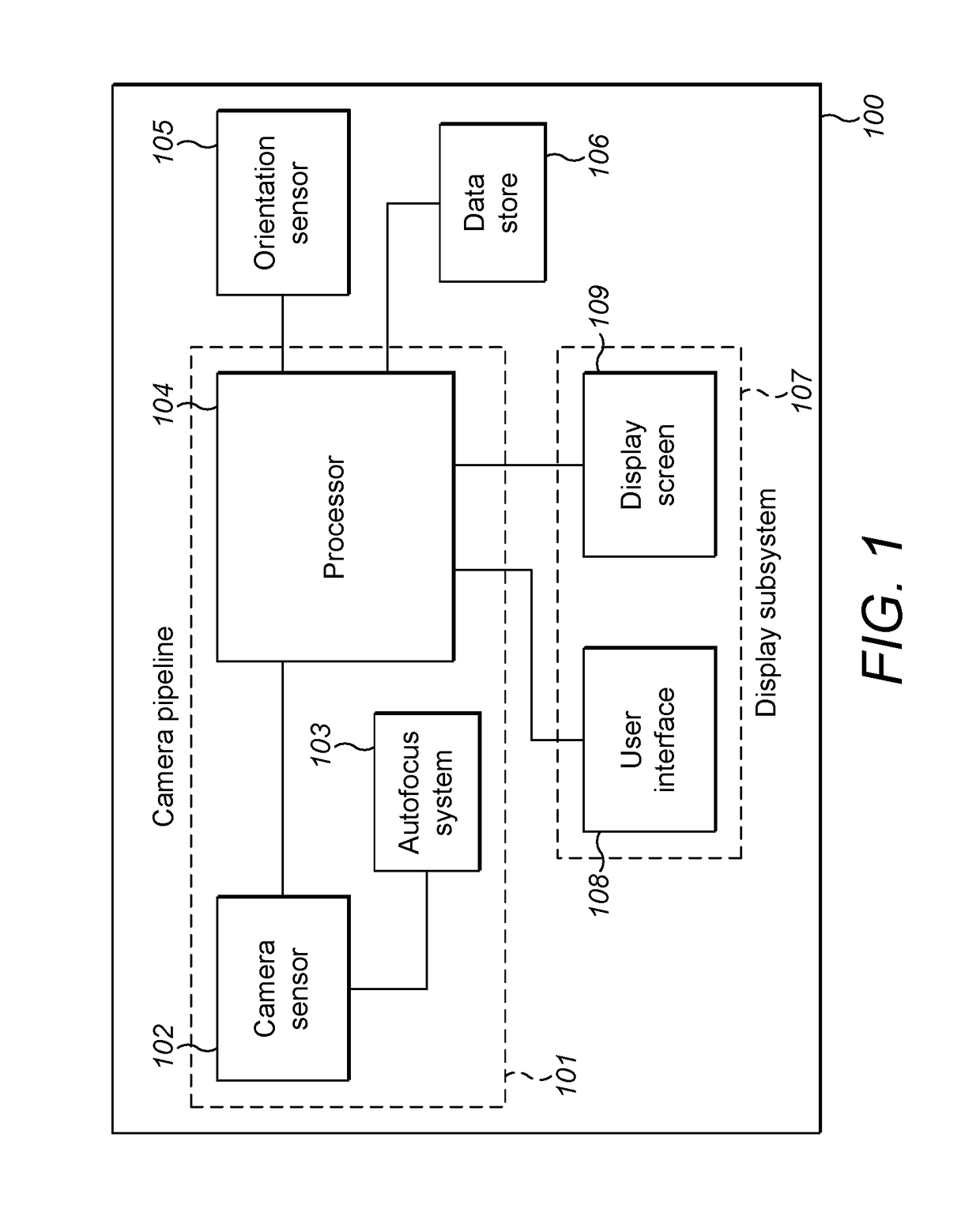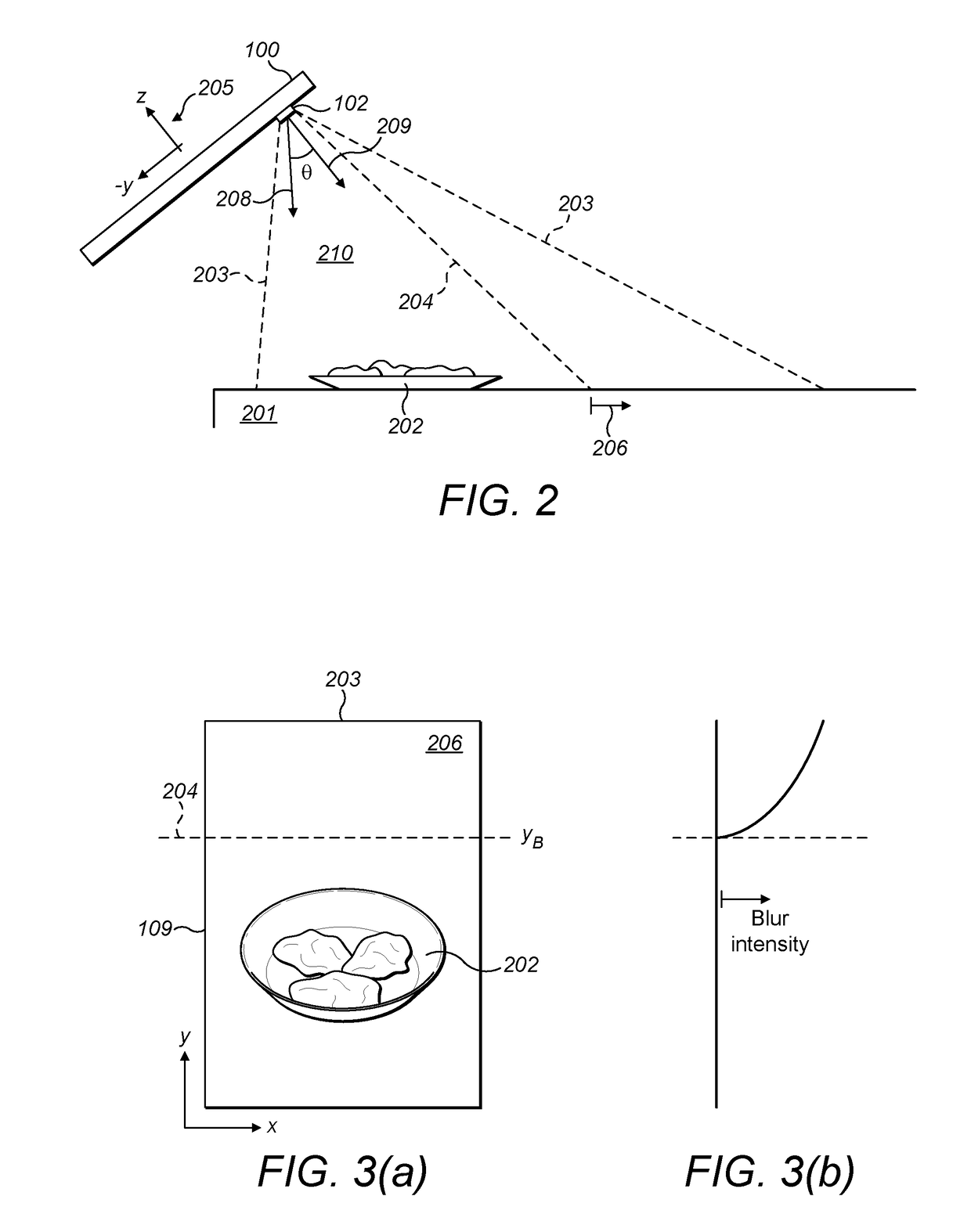Depth of field processing
a technology of depth of field and processing system, which is applied in the field of depth of field processing system, can solve the problems of not being able to achieve a sufficiently large aperture for compact digital cameras and digital cameras integrated into smartphones and tablets, affecting the accuracy of blur applied in that region, so as to increase the intensity of applied blur and increase the fall-off rate of applied blur
- Summary
- Abstract
- Description
- Claims
- Application Information
AI Technical Summary
Benefits of technology
Problems solved by technology
Method used
Image
Examples
Embodiment Construction
[0043]The following description is presented by way of example to enable a person skilled in the art to make and use the invention. The present invention is not limited to the embodiments described herein and various modifications to the disclosed embodiments will be apparent to those skilled in the art.
[0044]There is a need for a fast and low power technique for realistically simulating depth of field for a wide range of scenes at a digital camera which is not equipped with a lens system enabling a physical depth of field to be produced.
[0045]FIG. 1 shows an image processing device configured to simulate a depth of field effect in a captured image. The image processing device 100 comprises a camera sensor 102, a processor 104 and an orientation sensor 105. The camera sensor and processor may belong to a camera pipeline 101 which could pre-process captured images prior to the application of a blur effect, e.g. by performing automatic control of contrast, white balance, exposure etc....
PUM
 Login to View More
Login to View More Abstract
Description
Claims
Application Information
 Login to View More
Login to View More - R&D
- Intellectual Property
- Life Sciences
- Materials
- Tech Scout
- Unparalleled Data Quality
- Higher Quality Content
- 60% Fewer Hallucinations
Browse by: Latest US Patents, China's latest patents, Technical Efficacy Thesaurus, Application Domain, Technology Topic, Popular Technical Reports.
© 2025 PatSnap. All rights reserved.Legal|Privacy policy|Modern Slavery Act Transparency Statement|Sitemap|About US| Contact US: help@patsnap.com



